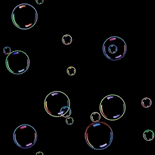Welcome to my web page about the Northern Lights
Aurora Borealis from Alaska in the USA and various provinces of Canada including Manitoba and the Yukon Territory
The people who live in the big cities of the world enjoy the bright lights and the wonderful firework displays for special celebrations, such as New Year's Eve or Halloween. However this artificial brilliance is nothing compared to the wonderful sight of the natural phenomenon known as the Northern Lights, or the Aurora Borealis, in the Northern Hemisphere of the world. Mirror-image lights are visible in the Southern Hemisphere, where they are called Aurora Australis.
'Aurora' was the Roman Goddess of Dawn, 'Boreas' is Greek for 'wind' and 'Australis' is
Latin for 'of the South'. The Northern and Southern Lights occur at the magnetic fields of the polar regions and are the result of charged particles of protons and electrons, from the magnetosphere around the Earth.
Your vacation can be as colorful as you want it to be. The road to adventure is waiting.
See map below.
Among the most magnificent of natural phenomena, auroral displays appear in
shades of red, yellow, green, blue, and violet and are usually brightest in their most northern latitudes.
The aurora is seen in a variety of forms, e.g., as patches of light, in the form of streamers, arcs,
banks, rays, or resembling hanging draperies.
The aurora occurs between 35 mi and 600 mi (56 km–970 km) above the earth. It is caused by high-speed electrons and protons from the sun, which are trapped in the Van Allen radiation belts high above the earth and then channeled toward the polar regions by the earth's magnetic field. These electrically charged particles enter the atmosphere and collide with air molecules (chiefly oxygen and nitrogen), thus exciting them to luminosity; near the 600-mile level, the light may be given off by electrons and protons combining to form hydrogen atoms.
The auroras coincide with periods of greatest sunspot activity and with magnetic storms (disturbances of the ionosphere which interfere with long-distance radio communication). " These particles collide with molecules and atoms from the Sun, then carried into the ionosphere on the solar winds. The emission of different gases in the particles form colored lights. When looking at the picture below, you will see a Northern lights corona display, which is a luminous circle near the zenith with a Big Dipper constellation in the center. The photo was taken in Fairbanks, Alaska. By Patrick J. Endres. This is one of my most favorites by far. I think you will like this too.





